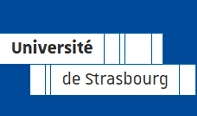Jr.-Prof. Dr. Annette Brunsen "Combining Structure and Function by Polymer Functionalization of Mesoporous Thin Films to Manipulate Ionic Permselectivity"
Smart Membranes im LOEWE-Forschungsschwerpunkt Soft Control, Technische Universität Darmstadt
| What |
|
|---|---|
| When |
Feb 06, 2014 from 02:15 PM to 03:00 PM |
| Where | Seminarraum B, FMF, Stefan-Meier-Str. 21, Freiburg, Thursday |
| Add event to calendar |
|
Polymer-functionalized mesopores allow molecular control over nanostructural and chemical features, provided by self-assembly techniques, and controlling chemistry in confined pores. Controlling structure and function on the nanoscale is a major challenge in the fabrication of functional nanodevices, and can for example be used to switch ionic permselectivity through nanometer-sized pores. The functionality of biological ion channels is closely related to their organization on the nanometer scale. As synthetic membranes, inorganic polymer-hybrid films allow an organized assembly of different functionalities at the molecular level. With a suitable choice of building blocks and a controlled assembly, it is possible to prepare sol-gel processed, mesoporous films with precisely defined and tunable structural and chemical functions. The combination of such mesoporous membranes and polymer-functionalization enables responsive chemical functionality and surface properties, by adjusting chemistry in confined pores.
We investigate attempts to adjust the polymer density in mesoporous thin films in a controlled manner, by adjusting the initiator density in the mesoporous film. By adjusting the amount of polymer the number of charges at the pore wall surface can be regulated, which results in a control on ionic permselectivity. This might be useful for applications in separation technologies, but can as well be used for consecutive pre-concentration of functional compounds such as metal nanoparticles which imply catalytic properties. We especially focus on responsive polymers, which allow the switching of membrane properties. Responsive gating of ionic permselectivity can be achieved by different stimuli such as pH-, or redox stimuli for example.

